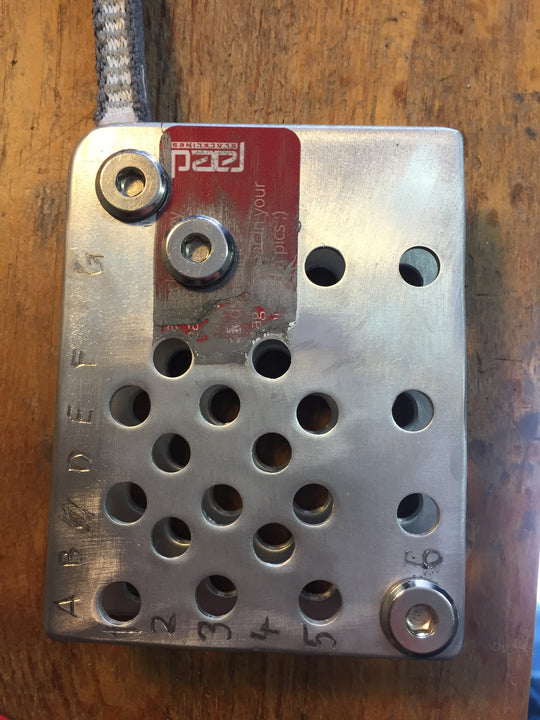
The history of ZAED
Share
When I, Stephan - the founder and CEO of raed - met my girlfriend, we ran into a problem: Both of us love climbing, but she's so much lighter than me that couple time at the gym was an impossible task. That's because I could easily belay her but it was not safe when she tried to belay me, anytime I took a whipper she skyrocketed up to the first quickdraw and I dropped to scary depth.
A friend of us recommended several devices that were aiming to solve that issue, so we started testing them. The problem with all the available devices was noticable right at the very first tests: They were aiming at creating massive additional friction to provide safety even for unexperienced ultralightweight belayers coupled with the heaviest climbers possible. But we were sports climbers, I love a smooth whipper with a controlled and soft catch. None of these devices allowed for that, they catapulted me right into the wall directly below the highest quickdraw instead. This is obviously very safe to prevent grounders, but it's also possibly painful for the climber's ankles and wrists: Hitting the wall that hard needs some very active suspension by the climber towards the fast approaching and unforgivingly hard wall. Long story short: We weren't satisfied with the status quo.
Let's develop our own!

Since I was already involved in the gear development at raed slacklines my logical conclusion was: Let's see if we can find a solution to that problem on our own. A very rough first idea was sketched and some metals scraps were collected and drilled to check if the idea was ridiculous or worth following. It turned out to be worth following, so the painful part could begin: the engineering phase.
Engineering phase
Engineering a very rough idea means to develop countless prototypes, one after another, each based on the insights we gathered from the latest version. Of course we didn't know why a certain prototype worked well or bad - so every single piece of knowledge opens several new paths with several new questions. 3D printing several parts allowed us to speed up some processes but in the end a 3d printed part can't be tested in real life scenarios, you need to make them out of metal.

At a certain point we even went down a path where a regular climbing rope wasn't even capable of sliding through the device anymore 🙈. Lessons learned, improved, next version!

We found the geometry that made us pretty happy in our real world climbing tests: the device finally worked well enough to be used as a belay resistor by ourselves and our very best friends.
So the intense testing could finally start. This is obviously the more fun part, since it involves lots of climbing and whipping.

Design phase
Testing a device is one part, another part is designing it to a point where users recognize it as a beautiful piece of gear that they love to handle. So again: more ideas, more prototypes!

Refining phase
We had a product but we weren't ready yet. Countless small design changes and several improvements to increase the safety of the device went into the final design. We optimized the handling process of how to attach it to the climbing rope, we increased the safety of the pin by adding a protective head that prevents accidental opening. We minimized the weight wherever possible without compromising ZAED's strength. We even developed a titanium version for the ultralight fans out there (we hear you 😜 ).
TÜV tested
What followed now was just several months of further real world testing and finally the safety test by TÜV Austria, to guarantee the highest safety possible. This is where we are right now: ZAED 1.0 is finally here. Now it's time to take it to the gym and the crags of the world. Maybe we'll find some more ideas there 😉

